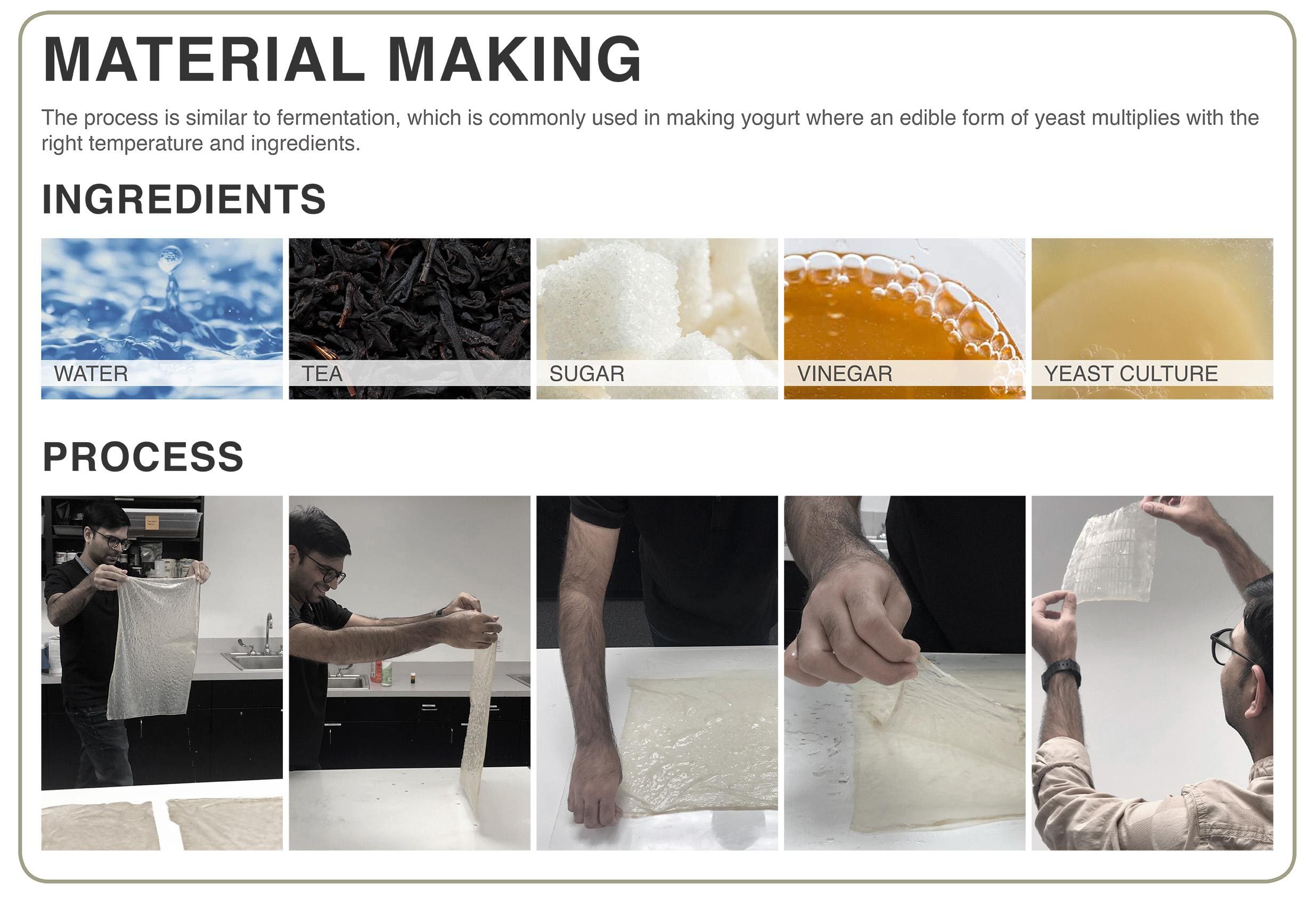Living in a Material World: Biofabrication in Design
December 4, 2019Living in a Material World: Biofabrication in Design
Two decades into the twenty-first century, scientists generally agree that we must minimize our impact on the planet or the consequences will be devastating. From fashion to food, our manufacturing paradigm must continue to evolve toward ever more sustainable practices. A good place to start, according to alumnus Vikas Sethi (’19, Color and Materials Design), is biofabrication technology, which has already revolutionized the fields of medicine and engineering and is poised to do the same across design disciplines.
“The global urgency to develop efficient materials by using cleaner technology has led to an increased interest in biofabrication by many innovators, designers and architects,” Sethi said.
In 2018, the United Nations reported that “biofabrication is harnessing the potential of such organisms as bacteria, yeast, algae, mycelium [the multi-celled fungus responsible for mushrooms] and mammalian cells to cultivate complex structures that can be processed afterward” — and become, well, potentially anything.
This is not science fiction. Think lifesaving drugs, biofuels, and plant-based meat alternatives. In terms of design, think sustainable fabrics or bio-based replacements for plastic.
For his MFA thesis project, Sethi grew his own bio-based material using water, tea, sugar, vinegar and yeast cultures, subjecting the ingredients to a process similar to fermentation as well as multiple color experiments. The result? A flexible material that could potentially be used across multiple applications, including packaging, garments, stationery and printing, readable tactile surfaces such as braille, and more.

“I have a background in crafts and product design,” Sethi explained. “I often felt a disconnect whenever design dictated material. I wanted to empower my designs; they shouldn’t be dependent on any one material in order to be realized. Having worked with natural fibers before, I wanted to explore material-making skills and sustainability.
“This project began with a need to understand the process of biofabrication, which involved exploring the characteristics and properties of this newly created material. Ultimately, the purpose of the project is to encourage conversations around sustainability and alternative materials and, hopefully, evoke empathy for the environment we live in.”

